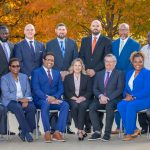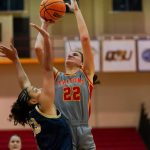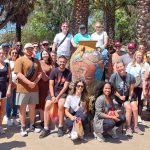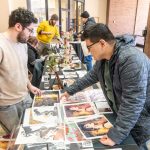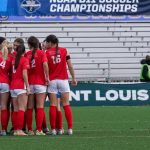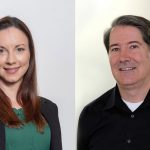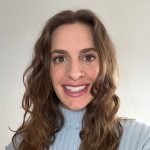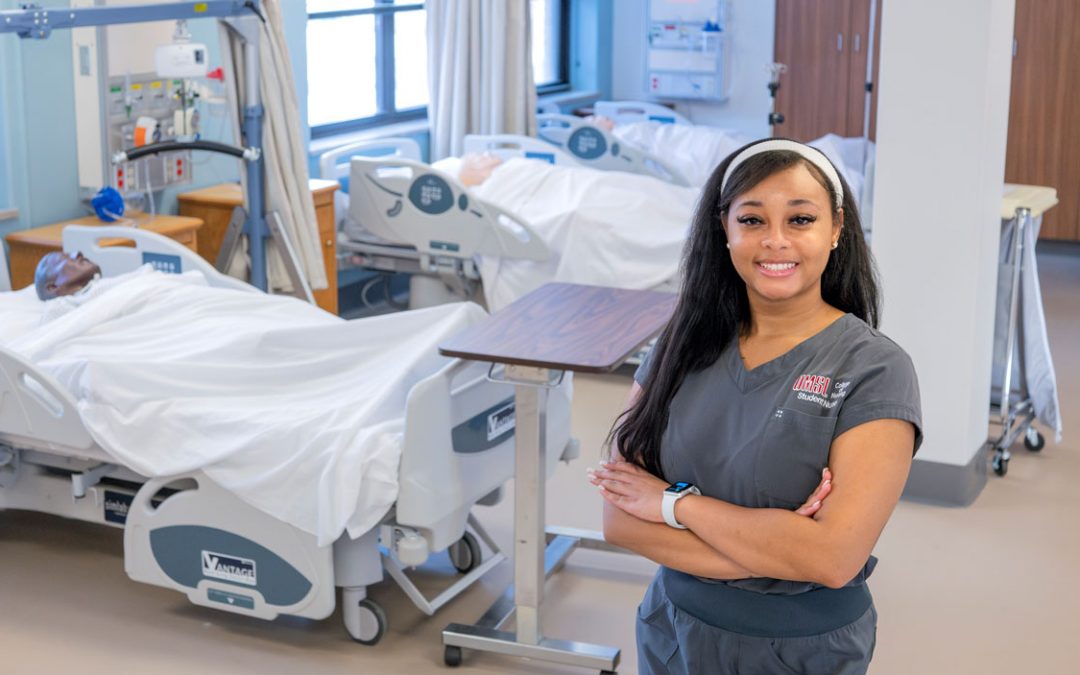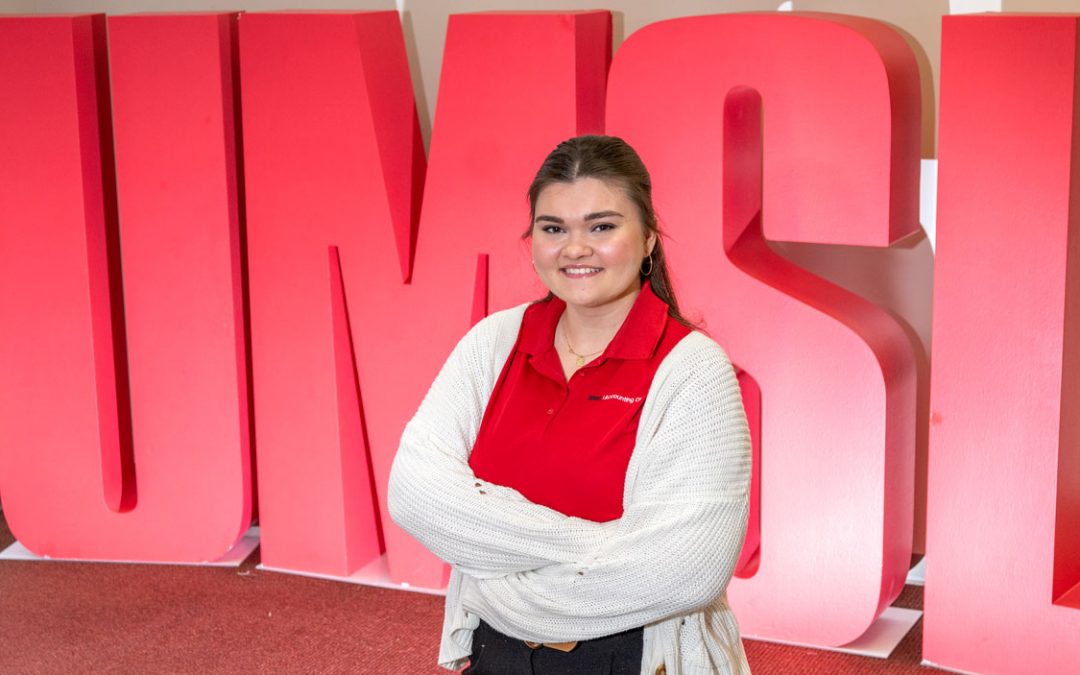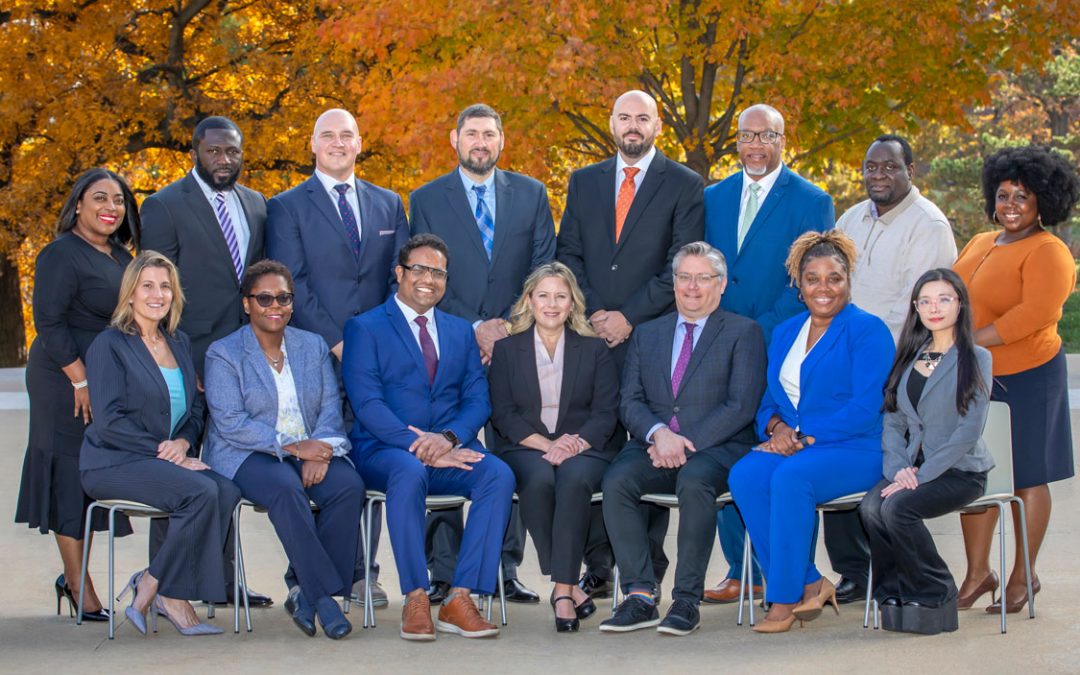
Shikego Sasamori (center) was only about two miles from the hypocenter when the United States detonated the bomb over the city. It’s estimated that 140,000 of Hiroshima’s population of 350,000 were killed in the bombing. Sasamori survived but, like many other survivors, sustained extensive burns on more than 25 percent of her body, including her face, neck and chest. (Photo from presentation)
The summer heat was already palpable in Hiroshima, Japan, the morning of Aug. 6, 1945. The day was clear, without a cloud in the sky. Shigeko Sasamori – 13 years old at the time – remembers it well.
She had just started helping other junior high and high school students clearing debris from the city streets in case there was need for an evacuation. Not long after beginning her work, she heard a distinct buzzing and looked up to see a large, shining airplane. Sasamori remembered thinking it was beautiful before an unseen force threw her to the ground, knocking her unconscious.
That is just the beginning Sasamori’s story of survival during the nuclear bombing of Hiroshima during World War II. She recounted her experiences of the day, subsequent recovery and commitment to peace Tuesday evening to members of the University of Missouri–St. Louis community during a special presentation titled “Surviving the Bombing of Hiroshima: A Message of Peace from Shigeko Sasamori.”
The digital event was livestreamed on Youtube and Zoom and was sponsored by the Ei’ichi Shibusawa-Seigo Arai Endowed Professorship in Japanese Studies, held by Laura Miller; UMSL Global; the UMSL Department of Language and Cultural Studies and the UMSL History Department.
Keiko Ueda, associate teaching professor of Japanese, moderated the discussion, noting the historical significance.
“She has dedicated her life to promoting peace throughout the world and spreading the message of Hiroshima,” Ueda said. “We share her story of what happened on that day and her life thereafter. This is the 75th commemoration of the end of World War II, so it is very important that we talk about peace at this time.”
Sasamori was only about two miles from the hypocenter when the United States detonated the bomb over the city. It’s estimated that 140,000 of Hiroshima’s population of 350,000 were killed in the bombing. Sasamori survived but, like many other survivors, sustained extensive burns on more than 25 percent of her body, including her face, neck and chest.
When she regained consciousness, the street was pitch black with dust, debris and smoke. Once it settled, she started to see others – clothes torn, bleeding.
“At the time, I didn’t feel any pain – numb, just numb,” she said of the aftermath.
Another survivor directed people across the river to safety. Sasamori started following others to an elementary school where the auditorium had become a makeshift emergency shelter. She stayed there for five days.
“I was saying my name and ‘Please give me water,’” she recalled. “I said to myself, ‘One more time, one more time’ to push myself to ask for water.”
Sasamori also kept repeating her name and address, asking adults to find her parents. Eventually, a man at the school went out to look for them and found her father near the family’s home. After reuniting, her parents took her home and nursed her back to health as best they could. Her mother treated her burns with what they had on hand – soybean oil.
The initial recovery process was several months by Sasamori’s estimate, and despite the severity of her wounds, she doesn’t remember any agony.
“I didn’t feel nothing,” Sasamori said. “No pain, no worrying, no crying. Nothing, just numb. Probably everybody felt numb. Otherwise, if you’re burned one fourth of the body, how can you move around if you felt the pain?”
In the years after the bombing, Sasamori had 10 surgeries in Japan before going to the United States for more extensive reconstructive surgery. In 1955, she traveled to New York as one of the “Hiroshima Maidens,” a group of 25 women scarred by the atomic blast. Kiyoshi Tanimoto, a Japanese reverend, and Norman Cousins, an American journalist and peace activist, raised the funds to bring them to the U.S.
In total, surgeons at Mount Sinai Hospital performed 138 operations on the women during an 18-month period. After the surgeries, Sasamori decided to stay in the U.S. and continued her education. She studied to become a nurse and would go on to practice in-home care for new mothers.
Eventually, she became a mother and raised a son herself – one of her greatest joys.
“When he was born, I said to him the first time I saw him in the hospital, ‘I promise you, you are not going to be a soldier. You are not going to war. I don’t want you to kill other people,” Sasamori said.
She kept her promise, and now, her son has raised two of his own children who are very close to Sasamori. She noted that her grandchildren call her every day to wish her good night.
The presentation ended with a Q&A session during which several attendees asked what people in the U.S. could do to encourage a more humane society. Her answer was simple.
“Love each other and be kind to each other,” Sasamori said. “Be nice to someone close to you, then we can have a better, more kind society.”
To view a recording of the virtual event, click here.





